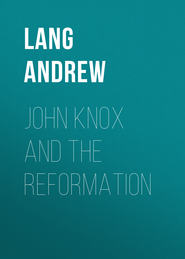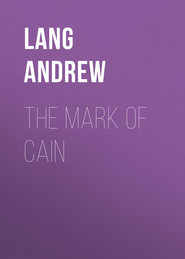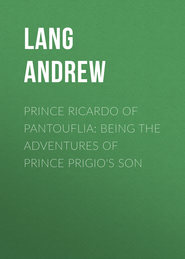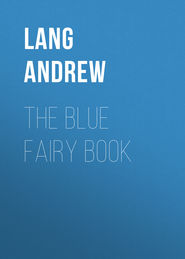По всем вопросам обращайтесь на: info@litportal.ru
(©) 2003-2024.
✖
Method in the Study of Totemism
Настройки чтения
Размер шрифта
Высота строк
Поля
I have now remarked on eight out of Mr. Goldenweizer's ten categories of differences between British Columbian and South Australian totemism; all of them, I think, are separable accidents of totemism; and most of them are easily to be accounted for by actual differences of culture, of social conditions, and by variety of savage taste and fancy in making guesses as to why totemists are totemistic.
IV
We next arrive at the two first of Mr. Goldenweizer's categories. These are concerned with points of such very wide diffusion in the totemic world that I, under correction, take leave to regard them as "normal," while I hold that such variations from the norm as exist can be explained – as aberrations.
The first of these two categories is announced as:
BRITISH COLUMBIA.
1. Exogamy
Totemic phratries (Tlingit).
Totemic clans (Haida, Tsimshian, Northern Kwakiutl).
CENTRAL AUSTRALIA.
2. Exogamy
Phratries.
Classes.
Totem clans (generally not independent exogamous units).
This needs explanation! By "totemic phratries" in the case of the Tlingits, Mr. Goldenweizer means the two main exogamous divisions of the tribe, Wolf and Raven. By "totemic clans," in the case of the Haida, he also means the two main exogamous divisions, Raven and Eagle, which, really, are phratries. But it is also clear that Mr. Goldenweizer is here using the word "clans" as it exists in the peculiar terminology of Dr. Swanton. Mr. Goldenweizer informs us that "Dr. Swanton now fully recognises the strict parallelism of the social units of the Tlingit and Haida, and sanctions the use of 'phratry' and clan in both cases." This terminological source of confusion happily disappears.
We are now, alas, entering a region where the variations of evidence, the confusions of terminology, and the influence of wealth and rank in the creation of heraldry, cause extreme perplexity. Meanwhile, as the Haida "clans" of the category are, in fact, phratries; on the other hand the "totemic clans" of the Tsimshians and Northern Kwakiutl (Raven, Eagle, Hawk, Wolf), and six "totemic clans" of the Northern Kwakiutl seem destitute of phratries, which, among the Arunta of Central Australia, have also died out Mr. Goldenweizer, however, assigns phratries to Central Australia, the Arunta have none;[13 - That is, the matrimonial classes, eight in all, are divided into two sets of four each, but these sets are nameless.] also "totem clans," where there are none, for the totemically named associations of the Arunta are not "clans," in the normal and usual sense of that word; they are not kins but associations.
Mr. Goldenweizer, in his first category, speaks of Central Australia as possessing totemic "clans" ("generally not independent exogamous units"). If by "Central Australia" he means the Arunta group of tribes, they have, I repeat, no "totemic clans"; they have only clubs with totemic names, and these associations are not "exogamous units." Where phratries with totem kins in them exist, no totem kin is or can be "an independent exogamous unit," except where one totem to one totem marriage prevails, as among certain Australian tribes. But if the phratry rule be dropped, as Morgan says it was among the Iroquois, then people may marry into any totem kin except their own, and each totem kin becomes an "independent exogamous unit."[14 - L. A. Morgan, League of the Iroquois, pp. 79-83.]
Thus the first category in Mr. Goldenweizer's list needs a good deal of explanation and criticism.
The second category is Totemic Names. Under these, in British Columbia, are:
"Phratries (Tlingit)."
"Clans (Haida)." (But these are phratries.)
"Two of four clan Tsimshian."
"Clans (Northern Kwakiutl)."
In place of two animal-named clans out of four, Mr. Frazer assigns four animal-named clans to the Tsimshians;[15 - I may be permitted to note that these four Tsimshian clans look, to me, as if they had originally been two pairs of phratries. We find a parallel Australian case in the Narran-ga tribe of York's peninsula in South Victoria. Here Mr. Howitt gives us the "classes" (his term for phratries):Each of these four main divisions had totem kins within it, and, as usual, the same totem (all are animals) never occurred in more than one main division. (Howitt, N.T.S.E.A. p. 130.) In precisely the same way "crests" of animal name occur in each of the four Tsimshian "clans":These "crests," thus arranged, no crest in more than one clan (or phratry?) look like old totems in the two pairs of clans, or, as I suspect, of phratries. The Australian parallel corroborates the view that the Tsimshian "clans" have been phratries.] Raven, Eagle, Wolf, and Bear. (T. and E., vol. iii. pp. 307-308.) Mr. Goldenweizer himself[16 - J. A. F. p. 187. quoting "Swanton 26th B. E. R., 1904-1905, p. 423."] also assigns these four animal-named clans to the Tsimshians. But, in his table,[17 - Ibid. p. 229.] he docks two Tsimshian clans of their totem names. He does so also in his p. 190. Thus (p. 187) all of the four Tsimshian "clans" have animal names. But (p. 190), and also in the tabular arrangement, only two of the Tsimshian clans have animal names. Mr. Frazer gives to all four Tsimshian clans the names of animals. Whom are we to believe[18 - The truth seems to be that Mr. Goldenweizer (p. 189) misquotes Mr. Swanton, who (26th B. E. R. p. 423) is speaking, not of the Tsimshian but of the Haida. In his p. 190 Mr. Goldenweizer is quoting Dr. Boas, Annual Archaeological Report, Toronto, 1905, pp. 235-249.] Method is here a little to seek.
A much more serious puzzle meets us when, in his second category (totemic names), Mr. Goldenweizer assigns no totemic names to the "clans" of the Tlingit, while Mr. F. Boas (whose list is quoted by Mr. Frazer) and Holmberg (1856) do assign totemic names to the Tlingit clans.
Let us examine this situation.
If we take a South-East Australian tribe of the Barkinji pattern, we find it divided into two animal-named intermarrying phratries (or exogamous intermarrying "classes" or "moieties," I call them "phratries"). In each phratry are totem kins, that is, kins named after animals, vegetables, or other things in nature. The names of phratries and totem kins (I know no other word for them but totem kins or totem clans) descend in the female line. No such totem kin occurs in both exogamous phratries, therefore all these units are necessarily exogamous.
Two-thirds of the Australian phratry names are untranslated, like those of the Dieri; the other third, with a single exception (the Euahlayi), are names of animals.[19 - Thomas, Kinship and Marriage in Australia.]
Now turn to the disputable case of the Tlingits of British Columbia. I first examine Mr. Frazer's account of them in Totemism and Exogamy (vol. iii. pp. 264-278). The Tlingits are divided into two exogamous phratries, or "classes," of animal names, Raven and Wolf. (In the north the Wolf "class" is also known as the Eagle.) Phratry exogamy is the rule; descent is in the female line. Each phratry is subdivided into a number of "clans," which are named after various animals. As no "clan" is represented in both phratries, and as all folk are obliged to marry out of their own phratry, the "clans" are, inevitably, exogamous.
For purposes of comparison with other British Columbia tribes, I give the list of Tlingit totem kins furnished by Mr. Frazer, "on the authority of Mr. F. Boas"[20 - T. and E., vol. iii. p. 266, note 1.]:
Примечание 1[21 - T. and E., vol. iii. p. 266, note I.]
As I found out, and proved, in many Australian tribes the name of each phratry also occurs as the name of a totem kin in the phratry; so also it is among the Tlingit —teste Mr F. Boas.[22 - Secret of the Totem, pp. 164-170]
Thus on every point – female descent, animal-named phratries, animal-named totem kins, and each phratry containing a totem kin of its own name, the Tlingit totemism is absolutely identical with that of many South-Eastern Australian tribes of the most archaic type.
But the Tlingit, unlike the Australians, live in villages, and "the families or households may occupy one or more houses. The families actually take their names from places." (I italicise the word "families.") Mr. Frazer's authorities here are Holmberg (1856), Pauly (1862), Petroff ("the principal clans are those of the Raven, the Bear, the Wolf, and the Whale"), Krause (both here undated). Dr. Boas (1889). and Mr. Swanton (1908).
Mr Goldenweizer[23 - J. A. F. p. 186.] does not mention that the "clans" of the Tlingit have animal names. Quite the reverse; he says that "the 'clans' of the Tlingit … bear, with a few exceptions, names derived from localities."[24 - J. A. F. p. 190.] This is repeated on p. 225.
At this point, really, the evidence becomes unspeakably perplexing. Mr. Frazer, we see, follows Mr. F. Boas and Holmberg (1856) in declaring that the "clans" of the Tlingit bear animal names. Mr. Goldenweizer says that, "with few exceptions," the "clans" of the Tlingit bear "names derived from localities."[25 - J. A. F. pp. 190-225.] Mr. Goldenweizer's authority is "Swanton, Bur. Eth. Rep., 1904-1905 (1908), p. 398." Mr. Frazer[26 - T. and E., vol. iii. p. 266, note 1.] also quotes that page of Mr. Swanton, but does not say that Mr. Swanton here gives local, not animal, names to the clans of the Tlingit. Mr. Frazer also cites Mr. Swanton's p. 423 sq. Here we find Mr. Swanton averring that Killer Whale, Grizzly Bear, Wolf, and Halibut are in the Wolf phratry, "on the Wolf side," among the Tlingit; while Raven, Frog, Hawk, and Black Whale are on the Raven side. Here are animal names (not precisely as in Mr. Boas' list) within the phratries. But Mr. Swanton does not reckon these animal names as names of "clans"; to "clans" he gives local names in almost every case. To his mind these animal names in Tlingit society denote "crests" not "clans" and with crests we enter a region of confusion.
I cannot but think that the confusion is caused (apart from loose terminology) by the crests of these peoples. The crests are an excrescence, a heraldic result of wealth and rank; and as such can have nothing to do with early totemism. Scholars sometimes say "totems" when they mean "crests" (and perhaps vice versa), and confusion must ensue.
I quote, on this point, a letter which Mr. Goldenweizer kindly wrote to me (Jan. 21, 1911).
"Since the appearance of Mr. Swanton's studies of the Tlingit and the Haida there remains no doubt whatever that the clans of these two tribes bear (with some few exceptions) names derived from localities. On pp. 398-9-400 of his Tlingit study (26th Report of the Bureau of American Ethnology, 1904-5) he gives a list of the geographical groups, and of the clans with their local names, classified according to the two phratries: Raven and Wolf. It must be remembered that to many of these clans he gives the totems [crests] of the Tlingit phratries: then the gentes [clans] of the Stikin tribe are enumerated. Some of the native names are translated as house or local names; it is pointed out that the raven occurs four times as the crest of four gentes [clans] with different names which, therefore, cannot mean 'raven.'
"The Haida case is quite parallel. Here 'each clan [phratry] was subdivided into a considerable number of families [clans] which generally took their names from some town or camping-place.' And again: 'It would seem that originally each family occupied a certain place or lived in a certain part of a town' (Swanton, The Haida, pp. 66, sq.) Now, of course, many clans are represented in several districts. Opposite p. 76 we find a genealogical table of the Raven families [clans] descended from Foam Woman, with their local names. A similar table of the Eagle families [clans] descended from Greatest Mountain, is given on p. 93. Again Professor Boas' account, although fragmentary, is correct. 'The phratries of the Haida are divided into gentes [clans] in the same way as those of the Tlingit, they also take their names, in the majority of cases, from the houses' (R.B.A.A.S., p. 822). The names of the Skidigate-village-people clans are given as an example.
"As to personal names among the Haida, a curious fact must be noted. Notwithstanding the greater prominence of crests and art among the Haida, their personal names are but seldom derived from animals, as is the rule among the Tlingit, the clans are not now restricted to one village district, but are found in several of the geographical groups. Thus the G ā n A x Á d î (of the Raven phratry) are found in the Tongas, Taku, Chilkat and Yakutat groups, while the Tégoedî (of the Wolf phratry) occur in the Tongas, Sanya, Hutsnuwù and Yakutat groups. The only non-local clan-names in the list are the Kuxînédî (marten people) of Henya; the SAgutēnedî (grass people) and NēsÁdî (salt-water people) of Kake; the LlūklnAxAdî (king-salmon people) of Sitka; and the LugāxAdî (quick people) of Chilkat. Each of these five clans occurs only once in the list, from which we may perhaps infer that they are of relatively late origin (this merely as a suggestion). On the other hand, 'the great majority of Tlingit personal names,' Mr. Swanton tells us, 'referred to some animal, especially that animal whose emblem was particularly valued by the clan to which the bearer belonged' (Bureau, 1904-5, pp. 421-2). In the passage you note, viz. 'the transposition of phratries is indicated also by crests and names, for the killer-whale, grizzly bear, wolf, and halibut, are on the Wolf side among the Tlingit and on the Raven side among the Haida, etc.,' the animals cited are the 'crests' while the 'names' referred to are, of course, the personal names which are derived from animals and as a rule change with the crests; therefore, they are not illustrated in the passage.
"Professor Boas' list is incomplete but similar in substance (Reports of the British Association for the Advancement of Science, 1889. p. 821). First majority of Haida personal names refer to the potlatch, property, etc. (Swanton, The Haida, pp. 119-120.) This is, no doubt, due to the influence of the potlatch which is among these people the central social and ceremonial feature.
"Holmberg's work I did not see. Probably his list of animals also stands for the crests and not the clan names…
"Of the Tsimshian clans only two bear animal names. K'anhada and GyispotuwE'da do not, as Professor Boas formerly supposed, mean 'raven' and 'bear' (cf. R.B.A.A.S., 1889. p. 823 and Annual Archaeological Report, Toronto, 1906, p. 239)."
If I may ask a question about this very perplexing state of affairs, I would say, Is the animal crest of each "clan" supposed to be later than the local designation of the clan? To me it seems that the crest is in origin a heraldic representation of the clan totem, and that, as in Australia, totemic names of clans are older than names derived from localities or "houses." The house, the fixed building, is part of a society later than the first bearing of totemic names by clans. The crest, as a badge of rank and wealth, is later than the totem; social advance, houses, towns, heraldry, as a mark of rank, appear to me to cause the perplexities, and to place these American tribes outside of the totemism of people without rank, wealth, and houses and heraldry.
As I understand the case, the Tlingit clans did not originally, as Dr. Swanton seems to suppose, "occupy a certain place or live in a certain quarter of a town," whence they derived the place-names or town-names which they at present bear, according to Dr. Swanton. The Tlingit, now living in towns, and with clans of town-names, may naturally fancy that from the first their clans bore local or town-names. But society that begins in people who, like the Tlingit, have female descent, cannot form a local clan of descent, unless the men go to the homes of the women, which is not here the case. Originally I think their crests, as in Holmberg's report, were effigies of their clan totems, and the clans bore their totem names. But with advance to wealth, houses, and settled conditions, the local or town-names (as in other cases is certain) superseded the totem names of the clans, while the totem badge became, as the crest, a factor in a system of heraldry, to us perplexing. Certainly the facts as given by Dr. Swanton, may be envisaged in this way; the processes of change are simple, natural and have parallels elsewhere.
If a totemic clan chooses to wear the image of its totem as a badge, and has no other badge, all is plain sailing. But in British Columbia, as in Central British New Guinea, men, in proportion to their wealth and descent, wear an indefinite number of badges or "crests." "Although referred to by most writers as totems," says Mr. Swanton, speaking of the Haida tribe, "these crests have no proper totemic significance, their use being similar to that of the quarterings in heraldry, to mark the social position of the wearers."[27 - Quoted, T. and E., vol. iii. p. 281.] Of course Australian totemists have no social position to be indicated by crests or badges. Now Dr. Boas speaks of "crests" as "totems," among the Haida,[28 - T. and E., vol. iii. p. 283.] and we are perplexed among these mixtures of heraldic with totemic terms.
Next, and this is curious, while Mr. Swanton gives local names to the "clans" of the Tlingit; to many but not all of his "House Groups" he gives animal names, "Raven, Moose, Grizzly Bear, Killer Whale, Eagle, Frog houses" and so on. All these animals are names of Holmberg's and Mr. F. Boas' totems of clans; but, according to Mr. Swanton, they are names borne, not by "clans" but by "house groups."[29 - Ber. Eth. Report, 1904-1905, pp. 400-407.] Other house groups have local names, or descriptive names, or nicknames, as "gambling house." Thus Mr. Frazer gives animal names to the "clans" of the Tlingit to which Mr. Swanton gives local names, and while many of the houses, or "house groups" of Mr. Swanton's Tlingit bear totemic names, Mr. Frazer says "the families generally take their names from places."[30 - T. and E., vol. iii. p. 266.] There appears to be confusion due to imperfect terminology.
Mr. Goldenweizer avers that "the intensive and prolonged researches conducted by a number of well trained observers among these tribes of the North Pacific border have shown with great clearness," – something not at present to the point[31 - J. A. F., p. 287.] But we regret the absence of clearness. Can we rely on Holmberg who described the state of affairs as it was fifty years ago, and who knew nothing, I presume, of Australian phratries and totem kins? In his time the Tlingit, like a dozen South-Eastern tribes of Australia, had animal-named kins in animal-named exogamous intermarrying phratries with female descent. Or was Holmberg (and was Mr. F. Boas in his list of animal-named Tlingit clans) led astray by the "crests"? Did each of these inquirers mistake "crests" for totems of clans?
One thing is clear, the Tlingit and the other tribes being possessed of wealth, and of gentry, and of heraldry, cause almost inextricable confusion by their use of heraldic badges, named "crests" by some; and "totems" (or both crests and totems at once) by other well trained observers. I am inclined to believe that most of these crests were, originally, representations of the totems of distinct totem kins. My reason is this: Mr. Swanton tells us that "the crests and names which among the Tlingit are on the Wolf side" are "on the Raven side" among the Haida. Among these people, animal names and crests are divided between the two phratries, the same name or crest not occurring in both phratries. This is merely the universal arrangement of totems in phratries.
Even now, among the Tlingit, says Mr. Swanton, "theoretically the emblems" (crests) "used on the Raven side were different from those on the Wolf or Eagle side," (precisely as, in Australia, the totems in Eagle Hawk phratry are different from those in Crow phratry), "and although a man of high caste might borrow an emblem from his brother-in-law temporarily, he was not permitted to retain it" (His brother-in-law, of course, was of the phratry not his own.) All this means no more than that occasionally a man of high caste may now impale the arms of his wife.[32 - R. B. E., ut supra, p. 415.] With castes and heraldry, born of wealth and rank, we have stepped out of totemism at this point It has been modified by social conditions. "Some families were too poor to have an emblem," did they also cease to have a totem? Some of the rich "could," it was said, "use anything." Is this because they pile up sixteen quarterings? "The same crest may be, and is, used by different clans, and any one clan may have several crests…"[33 - T. and E., vol. iii. p. 268.] Many "clans" now use the same crest, and there are quarrels about rights to this or that "crest." Some members of the Wolf phratry assert a right to the Eagle crest. Mr. Frazer thinks that "such claims are perhaps to be explained by marriages of the members of the clan with members of other clans who had these animals for their crests."[34 - T. and E., vol. iii. p. 269.]











